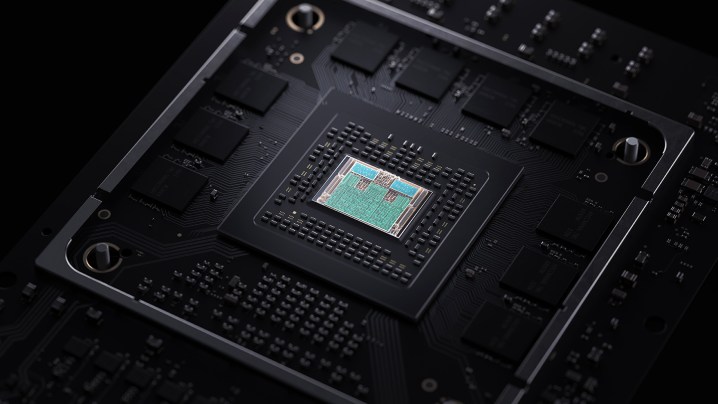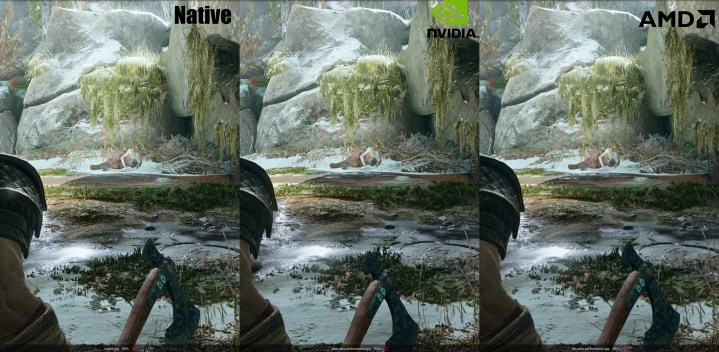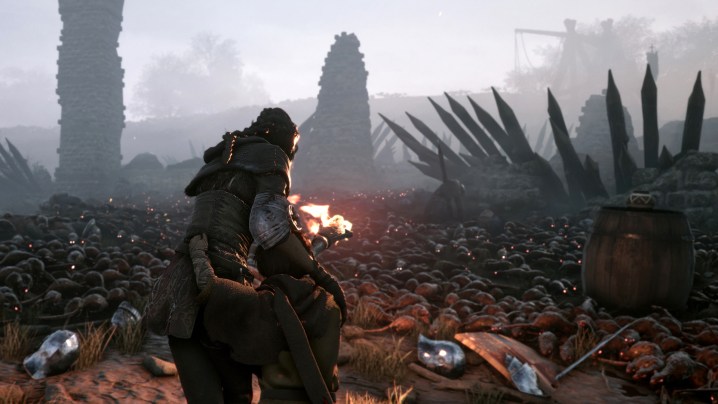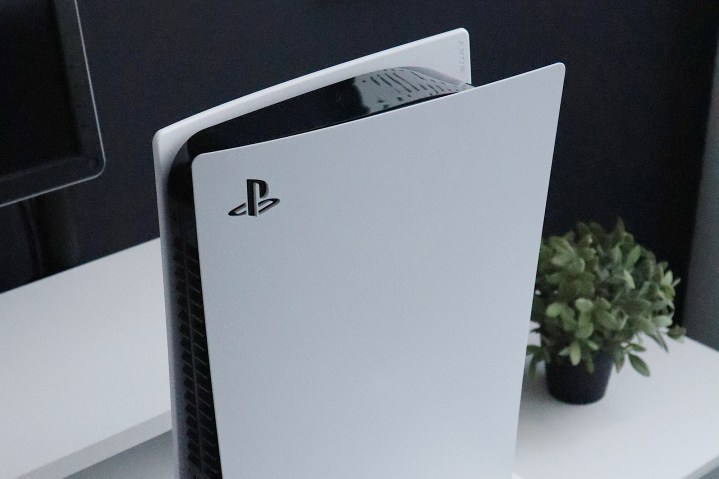The seams of the PS5 and Xbox Series X are starting to crack. Over the past week, two games launched that challenged the status quo for performance on current-gen consoles: A Plague Tale Requiem and Gotham Knights. Unlike nearly all console releases since 2020, both games shipped locked at 30 frames per second (fps) without a performance mode.
In late 2020, when the Xbox Series X and PS5 debuted, the norm was that players could opt for a high resolution at 30 fps or sacrifice a bit of visual fidelity for a smooth 60 fps. Sony never explicitly said the PS5 would always deliver a smooth 60 fps (Microsoft hinted at it), but that has been the expectation over the past two years. That’s changing, and the situation won’t improve going forward, especially for these third-party releases.
Next-gen, aging

Although the PS5 and Xbox Series X still feel next-gen, they’re really not. We’re two years away from release at this point, and the consoles are starting to show their age. Under the hood of both the Xbox Series X and the PS5 is a semi-custom system-on-a-chip (SoC) developed by AMD, which was already a bit out of date when the consoles released two years ago.
Both consoles come with a CPU that packs eight Zen 2 cores, the same architecture AMD used for its Ryzen 3000 desktop processors. It’s roughly equivalent to a Ryzen 7 3700X desktop CPU, minus a hair of clock speed. They both use a custom RDNA 2 GPU, as well, which is the same architecture AMD used for its RX 6000 graphics cards. The GPU is much more difficult to find an equivalent for, but it’s somewhere around an RX 6650 XT (read our RX 6600 XT review to get an idea about how that GPU performs in a PC).

At launch, the GPU power of these consoles was highly competitive with PC, despite the fact that the CPU power was lagging behind. Next-gen GPUs like the RTX 4090 are challenging that position, and developers are willing to leverage more demanding features to take advantage of more powerful hardware. If you look at the recommended system requirements for A Plague Tale Requiem and Gotham Knights, that’s clear to see. Neither the PS5 nor Xbox Series X meets the recommended PC requirements, which are the specs the developer recommends for 1080p at 60 fps (let alone 4K at 60 fps).
It’s not a one-for-one comparison — consoles benefit from a closed ecosystem that developers can target and optimize for — but it’s a good illustration of the demands of modern games and where “next-gen” consoles fit in that dynamic. They’re behind.
It doesn’t help that consoles feel much newer than they actually are. The PS5, for instance, is still sold out at most retailers and going for somewhere between $700 and $800 on the secondhand market. If we follow the timeline of the previous generation, we would see a PS5 Pro around six months from now, even though many still can’t buy a base PS5. It’s no secret that the PS5 is outselling the PS4, but even Sony recognizes that supply constraints are holding the console back from its full sales potential.

Game developers aren’t idly waiting, especially those developing for both consoles and PC. That includes pushing more intensive graphics features and better image reconstruction, which the PS5 and Xbox Series X don’t always have access to.
Tricky upscaling

The secret behind the best performance in games is upscaling. Consoles have done it for years, and they continue to do it, and even obscenely powerful GPUs like the RTX 4090 benefit from upscaling features like Deep Learning Super Sampling (DLSS). Unfortunately, features like DLSS and Intel’s XeSS aren’t available to consoles.
Instead, most consoles are using some in-house form of upscaling or opting for a feature like Unreal Engine’s Temporal Super Resolution (TSR). AMD’s FidelityFX Super Resolution 2.0 (FSR) is also available, at least on the Xbox Series X. These upscaling features are fantastic for GPU-bound games, but they’re not free.
Looking at FSR 2.0 as an example, AMD recommends an RX 5700 or RX 6700 XT (or higher) GPU to upscale to 4K. These upscaling tools render the game at a lower resolution, but you’re not getting the same performance as just running the game at that lower resolution; there’s some overhead. In Uncharted Legacy of Thieves, for example, we saw a 62.6 fps average with FSR 2.0’s Quality mode (rendering at 1440p and upscaling to 4K). At native 1440p, we saw 79.2 fps. That gap is the overhead of the upscaling algorithm.

That overhead is very important considering the thin performance margins consoles operate on. At 4K in A Plague Tale Requiem, for example, the RX 6700 XT can’t even manage 30 fps (and that’s with a more powerful CPU than the consoles have access to). Upscaling can help push that frame rate up into the high 40’s, but developers need to make the tough call of having a bad experience with a highly variable frame rate between 40 and 50 fps or a locked 30 fps where the game is smooth throughout.
Upscaling doesn’t help if you have a CPU bottleneck, either. Although most games are limited by the GPU, elements like the massive rat hoards in A Plague Tale Requiem can hit your CPU hard. CPUs don’t usually represent a big increase in gaming performance, so it makes sense why Sony and Microsoft went with the less powerful Zen 2 architecture. But recent generations with Zen 3 and Zen 4 have offered tangible improvements in gaming performance, and you can’t fake those improvements with upscaling.
Sign of the times

Consoles are usually very impressive at launch. They pack in way more power than you can get with a similarly priced gaming PC, but unlike a PC, consoles are locked. There’s only so far the hardware can go, and as visual fidelity climbs in games like Gotham Knights and A Plague Tale Requiem, performance suffers.
First-party games like the upcoming God of War Ragnarök have the benefit of close access to the hardware in consoles, allowing these releases to run at much higher frame rates with the right optimizations. Developers targeting multiple platforms don’t have that kind of access or time, so I wouldn’t be surprised to see many more 30 fps console games moving forward.
The good news for console players is that gaming PCs continue to evolve throughout the console’s lifecycle, offering better performance for lower prices over time. If you aren’t satisfied with the performance on offer with the PS5 or Xbox Series X, make sure to read our roundup of the best gaming desktops.
Editors' Recommendations
- How a rumored CPU might embarrass the PS5
- Fallout 4 is finally getting free Xbox Series X and PS5 upgrades
- Every rumored Xbox exclusive coming to PS5 and Switch
- 5 things you could buy for the cost of an Apple Vision Pro headset
- The Finals is the shake-up the competitive first-person shooter scene needs





